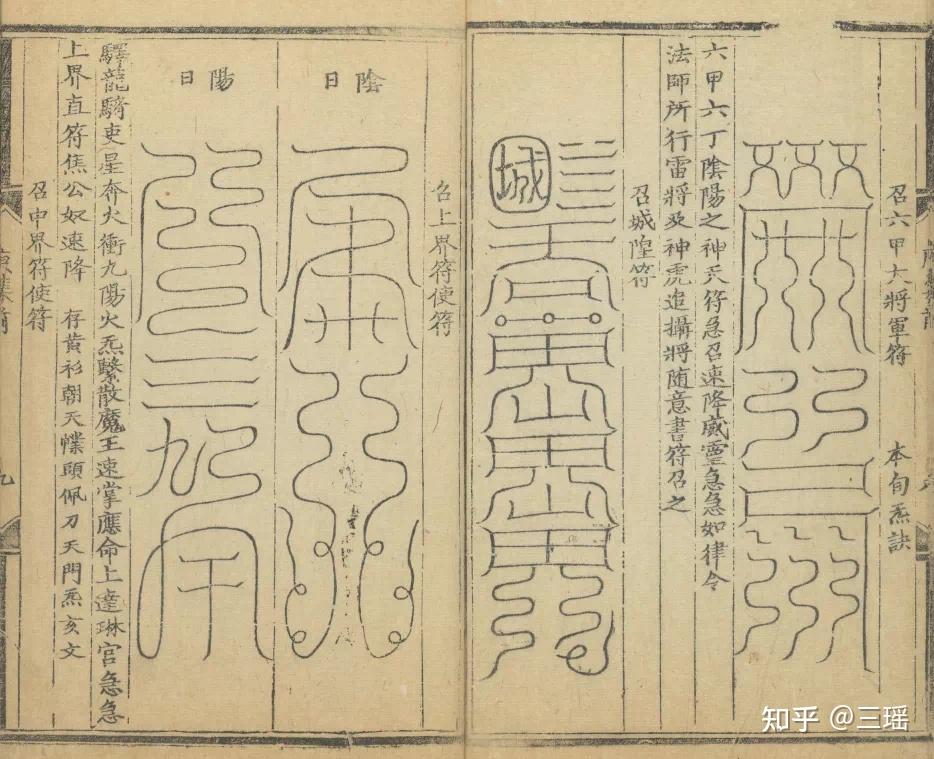
The Distinction Between Taoist Talismans (符) and Registers (箓)
In Taoism, different sects inherit unique traditions of talismans and registers, which often serve as their distinguishing features. For example, the Zhengyi Sect is known for bestowing registers, while the Quanzhen Sect emphasizes precepts for initiation and advancement within the Taoist hierarchy. However, the Quanzhen Sect also uses talismans. Despite their frequent use, people often mistakenly conflate talismans with registers. In reality, these two have distinct purposes and characteristics.
1. Functional Differences
Talismans and registers are interconnected yet distinct. Both serve as tokens of authority to command celestial soldiers and divine officers.
- Talismans (符): Primarily used to summon, command, or suppress spirits and dispel negative energy. Each ritual may require one or more talismans, drawn specifically for the purpose. Ancient texts describe talismans as powerful instruments that spirits obey without question. Similar to military tokens that grant authority, Taoist talismans embody unquestionable spiritual power.
- Registers (箓): Serve as credentials of authority. Upon receiving a register, a Taoist practitioner gains the right to command specific divine forces. Registers are essential for performing spiritual practices, healing, summoning deities, and communicating with spirits. The 30th-generation Celestial Master Zhang Jixian once proclaimed that their family’s registers could influence heaven and earth, resurrect the dead, and protect nations. Some registers may also include embedded talismans to summon specific divine beings.
Moreover, only those who have received specific ranks of registers are authorized to perform certain rituals. For example, practicing the “Heaven’s Will” ritual requires the Three-Five General Register, while the High Heaven Shenxiao Registeris necessary for Thunder Rites. Talismans and registers work in harmony during such ceremonies.
2. Structural Differences
The visual and textual structure of talismans and registers also differ significantly.
- Talismans: Often characterized by complex symbols resembling neither traditional characters nor typical illustrations. Each symbol contains encoded spiritual meaning.
- Registers: Typically contain detailed records of celestial officers, including their names, ranks, and the number of divine soldiers under their command. Some registers also depict the appearance and attire of these divine generals. A prime example is the Taishang Zhengyi Three Generals Register, which documents three commanders along with their respective armies and includes related summoning talismans. Unlike talismans, registers also include the recipient’s personal information, including their Taoist lineage and the officiating masters.
3. Methods of Use
Talismans and registers are applied in different ways.
- Talismans: Can be burned, consumed, worn, or affixed to locations to ward off evil or invoke spiritual aid.
- Registers: Are generally worn or enshrined at home for long-term spiritual protection. While some registers may be burned for purification purposes, this is done only in specific situations to prevent defilement.
In modern times, talismans are more commonly encountered, leading to misconceptions that blur the distinction between the two. Understanding the clear differences in their functions, structures, and uses can help preserve the authentic practices of Taoist culture.

